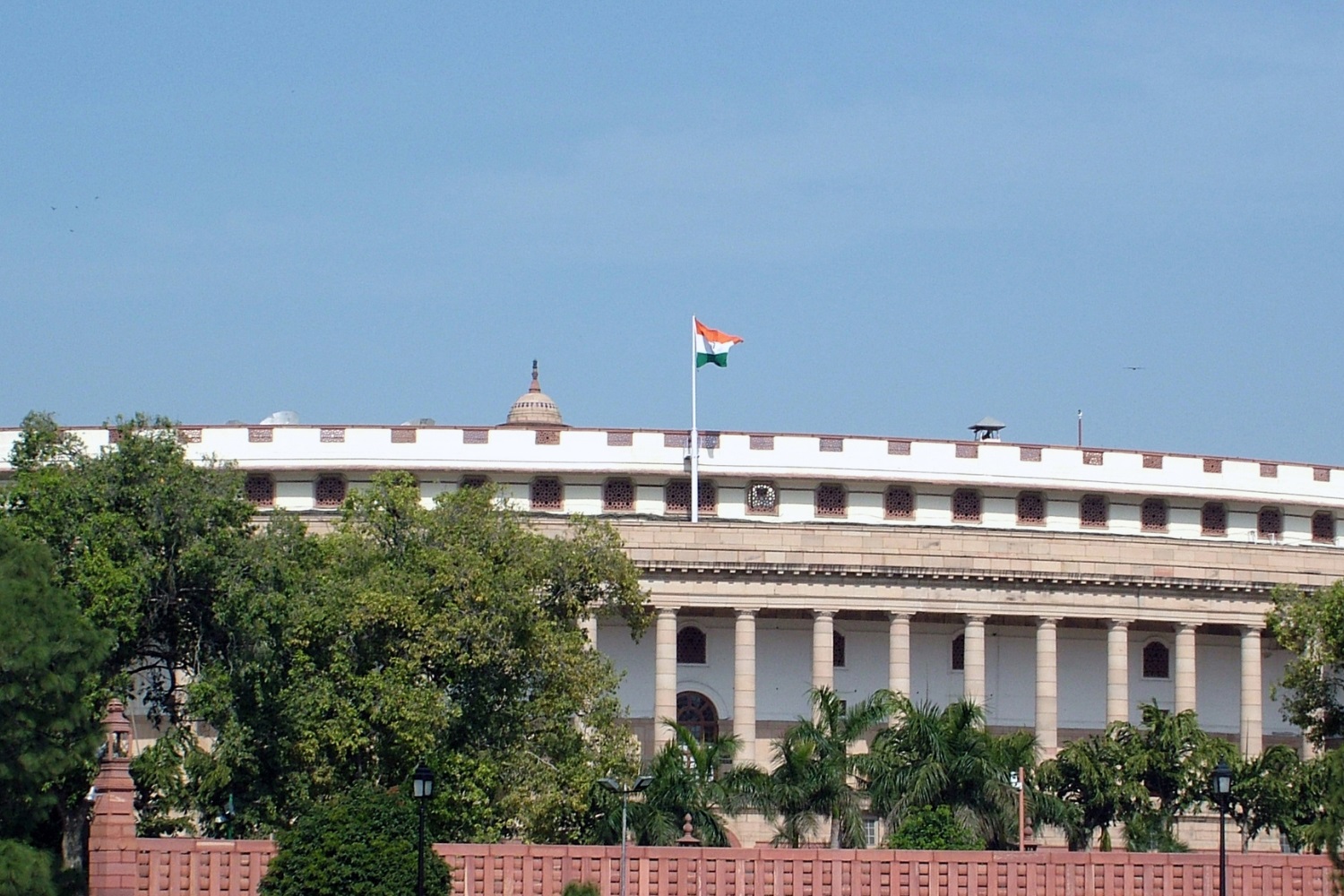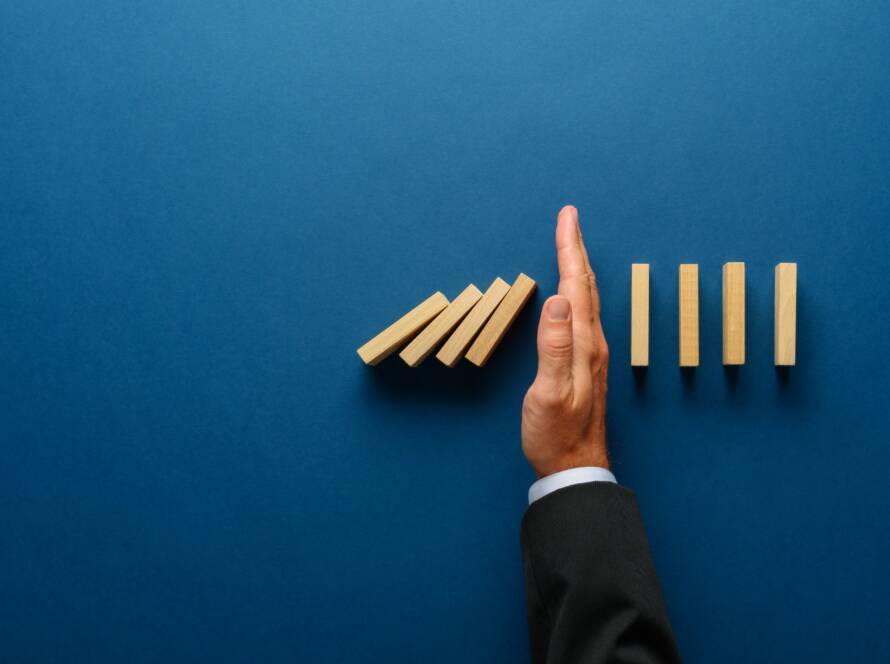Prime Minister Modi’s BJP seems on the way to remain in power after India’s general election. But which party wins probably matters less for the economy and financial markets than whether the election delivers a stable government with a working majority in parliament. Another single-party majority or even a durable coalition would set the stage for continued gradual reforms that would sustain relatively strong rates of economic growth over the coming years.
According to Goldman Sachs, India’s election-year economy will likely be a tale of two halves. They expect that we will see the drivers of economic growth shift midway through the year. Overall, despite food and oil supply shocks keeping inflation elevated, growth is forecast to remain stable and resilient.
For 2023, real GDP growth is expected to come in at 6.7% year on year. Among the 13 large economies in Goldman Sachs Research’s global outlook for 2024, India’s projected growth rate is the highest at 6.2%, with China in second at 4.8%. As the 2024 election approaches, “we expect consumption growth to be driven by subsidies and transfer payments,” write Goldman Sachs Research’s India economists Santanu Sengupta and Arjun Varma. “We have already seen increased allocation towards the rural employment program, higher cooking gas subsidies, and an extension of the food subsidy program.”
After the election, even as the government slows down its capital expenditure, our economists expect private investment to accelerate. Indian companies are well-positioned to do that, Sengupta told CNBC. “Bank balance sheets are well-capitalized, manufacturing balance sheets are deleveraged, and we have a China-plus-one tailwind going on,” he said.
ASIA-CONNECT helps western business with opportunities and challenges. Do not hesitate to connect with us and learn more about our executive interim solutions in INDIA – www.asia-connect.asia
Want to know more about India’s political system? Read below.
India, the world’s largest democracy, is set for a big round of elections in 2024. With over 900 million eligible voters set to cast their votes, the 2024 Lok Sabha elections may prove crucial in determining the future of India in a time of global insecurity and tensions.
India operates under a parliamentary system outlined in its constitution, where power is shared between the central government and various states. Renowned as the world’s largest democracy, India’s political structure is characterized by a ceremonial President who serves as the head of state and supreme commander-in-chief of the defense forces. However, the actual executive authority lies with the Prime Minister, who leads the party or coalition with a majority in the Lok Sabha, the lower house of parliament. As head of the executive branch, the Prime Minister advises the President and oversees the Union Council of Ministers.
At the regional level, India is divided into states and union territories, each with its own Governor as the titular head. However, executive powers are wielded by the Chief Minister, who heads the party or coalition victorious in the state assembly elections. Collaborating with the Prime Minister and central
government, when necessary, the Chief Minister governs the state. Certain union territories elect assemblies and have their own governments, while others are administered directly by individuals appointed by the President. The President ensures the rule of law across states through appointed governors, who advise and can recommend executive intervention if a state’s governance deteriorates into disorder. In such cases, the President can temporarily assume executive powers from the Chief Minister, dissolve the state government if needed, and initiate fresh elections.
Members of the Lok Sabha, the lower house of India’s Parliament, are elected through a democratic process where all adult citizens of India aged 18 and above vote for candidates standing in their respective constituencies. Each citizen can vote only in their own constituency. Those who emerge victorious in the Lok Sabha elections earn the title of “Member of Parliament” and serve a term of five years or until the dissolution of the body by the President upon the advice of the council of ministers. The Lok Sabha convenes in the Lok Sabha Chambers of the Sansad Bhavan in New Delhi to deliberate on matters concerning the creation, modification, or abolition of laws that impact all Indian citizens. Elections for the Lok Sabha are held every five years to elect 543 members.
Bharatiya Janata Party
The national executive meeting of BJP held on 16 and 17 January 2023 saw the party reaffirm its faith in Prime Minister Narendra Modi and extend the tenure of BJP national president J.P Nadda. Charting out the BJP’s strategy for the upcoming polls, PM Modi in his speech to party workers said they should reach out to every section of society, including the marginalized and minority communities, “without electoral considerations”. Following the 2023 Legislative assembly Elections, Modi debuted the slogan “Modi Ki Guarantee” for the 2024 polls.
Modi’s messaging in these campaign speeches combined an emphasis on the BJP’s paternalistic welfare schemes – which provide large amounts of free food and cash handouts – with nationalistic and religiously communal rhetoric, offering a glimpse of how the BJP intends to fight the election on a
national scale. Modi’s role in elevating India as a global power – be that in international politics or in the recent its moon landing in August – it was the first country to successfully land a spacecraft near the lunar south pole – was also prominent. What Modi’s reelection would mean for India, particularly if it was another outright majority, was a cause for concern among some analysts and human rights groups. Panda said it would be defined by economic success, and India becoming the world’s third largest economy.
Whilst others have concerns about the deteriorating relationship between Hindus and Muslims being exacerbated.
Indian National Congress (I.N.D.I.A)
The Congress campaign was launched from Nagpur at a huge rally in which over 1 million people were expected to have attended in Nagpur, Maharashtra on 28 December 2023. This rally also marked the 138th Congress Foundation Day and was being held to energize the party cadre for the 2024 Indian
general election. Party workers from all over the state are called to join the rally. On 14 January, the party launched its Bharat Jodo Nyay Yatraa sequel to the Bharat Jodo Yatra held the previous year. The yatra started in Thoubal, Manipur and will end in Mumbai on 20 March 2024. It will cover 6,713 kilometers (4,171 miles) across 14 states. They have announced their choice to appoint an official front runner for prime minister after more polls have been conducted.
Following disappointing performances in both the 2014 and 2019 General Elections, the Congress party has opted to participate in the upcoming 2024 General Elections as part of the I.N.D.I.A. alliance. This coalition comprises 26 parties, including prominent state-level entities such as the Aam Aadmi Party
(AAP), Samajwadi Party (SP), Trinamool Congress (TMC), Rashtriya Janata Dal (RJD), Nationalist Congress Party (NCP), among others. However, just ahead of the 2024 General Elections, the newly established I.N.D.I.A. alliance faced a significant setback when one of its key members, the Janata Dal United (JDU) led by Bihar’s Chief Minister Nitish Kumar, decided to withdraw, and join the NDA. This unexpected development dealt a severe blow to their electoral prospects and weakened their position against the ruling party in the eyes of voters.
The recent growth projections by the International Monetary Fund (IMF) for India appear promising at first glance, with expectations of a 6.7% expansion this year and a robust 6.5% in 2025. This places India at the forefront as the fastest-growing economy within the G20, potentially bolstering Prime Minister
Narendra Modi’s position as he approaches upcoming elections. However, amidst this optimism, there are starkly differing perspectives regarding the true health of the economy. It is evident that opinions are divided on whether the high growth rates are merely superficial, masking deeper structural issues left unaddressed by the government. While India has outperformed in terms of
GDP growth, there are lingering concerns regarding the sustainability and inclusivity of this growth trajectory. This dichotomy fosters a climate where optimism and pessimism about economic prospects can coexist within the same day.
Finance Minister Nirmala Sitharaman, in her recent budget speech, presented a narrative of optimism and confidence, touting the transformative changes witnessed in the Indian economy over the past decade. She highlighted the government’s initiatives in welfare populism, emphasizing generous subsidies and cash handouts, particularly targeting marginalized groups. This approach is strategically aimed at securing electoral support, especially from the significant welfare recipient demographic, as elections loom.
However, critics challenge the government’s narrative. Figures like Subramanian Swamy within Modi’s own party argue that the Modi government’s performance has been lackluster compared to previous years, citing lower average GDP growth rates. Similarly, former Central Bank Governor Raghuram Rajan voices skepticism about India’s ability to achieve its ambitious goal of becoming a fully developed nation by 2047, given the current growth trajectory, considering higher rates of growth between 6-8% in the decade preceding 2014 and Modi’s government. Further skepticism comes from analysts like columnist T.K. Arun, who paints a grim picture of the economy’s underlying health. Arun highlights concerning indicators such as India’s fixed capital formation as a proportion of GDP, which stands at 30%, well below China’s 50% during its high growth phase. He also underscores that the wages of the rural citizens have decreased with inflation over the last 10 years and the inadequacy of job creation, particularly in urban areas, indicating broader economic challenges beyond headline GDP figures.
In sum, while the IMF’s growth projections may inspire optimism, a closer examination reveals a complex economic landscape in India, characterized by both achievements and underlying vulnerabilities. The debate surrounding the true state of the economy underscores the need for comprehensive reforms to address systemic issues and ensure sustainable and inclusive growth.



